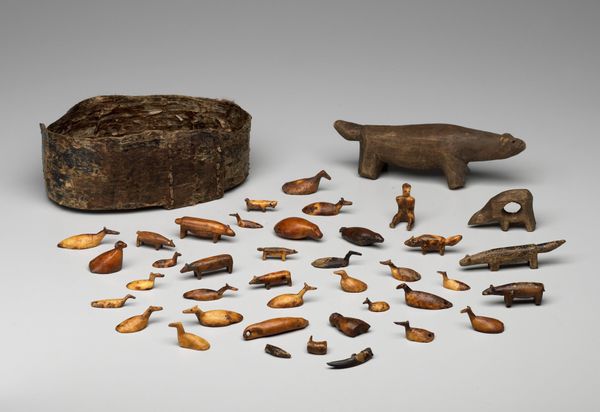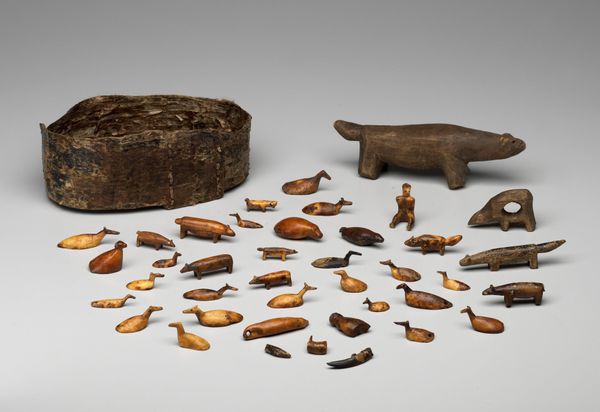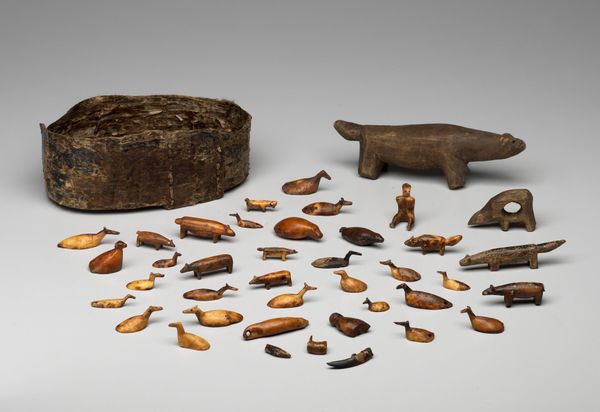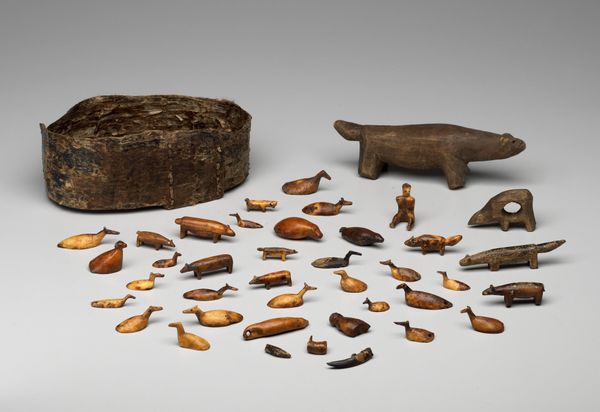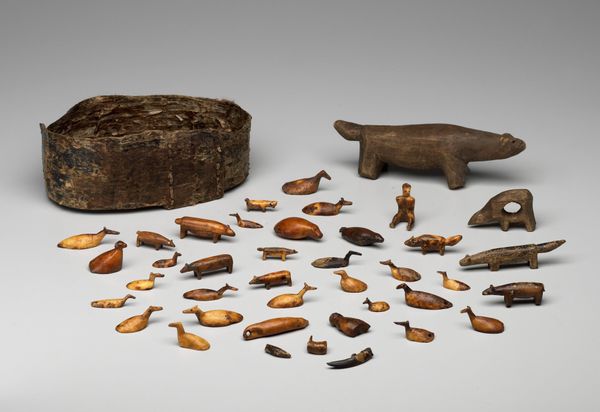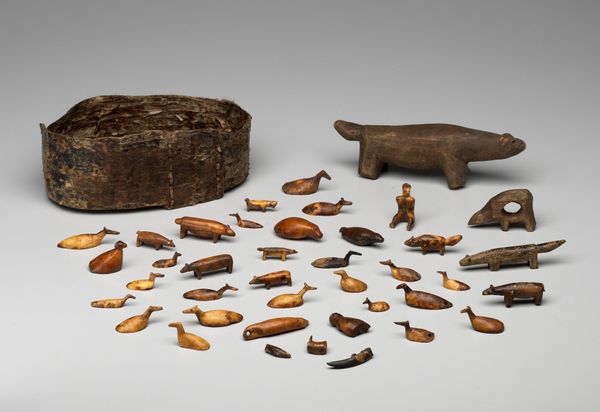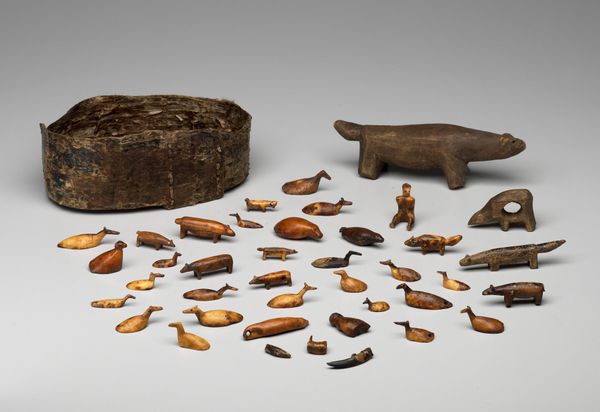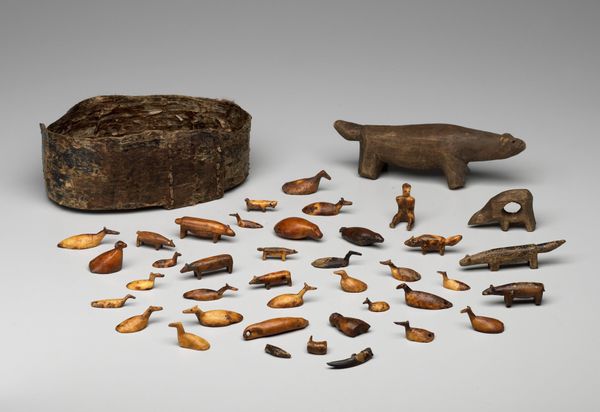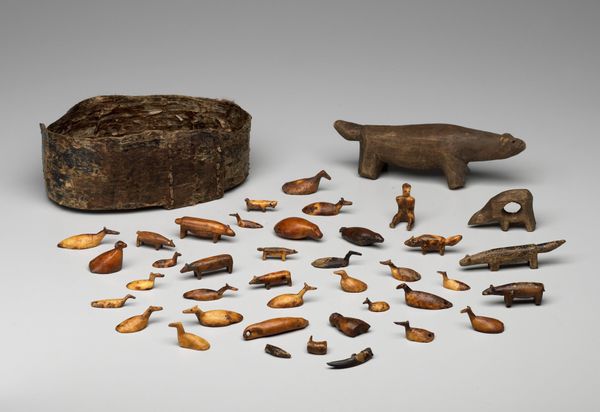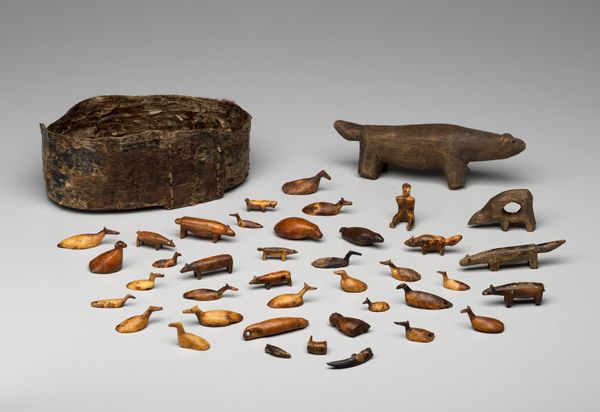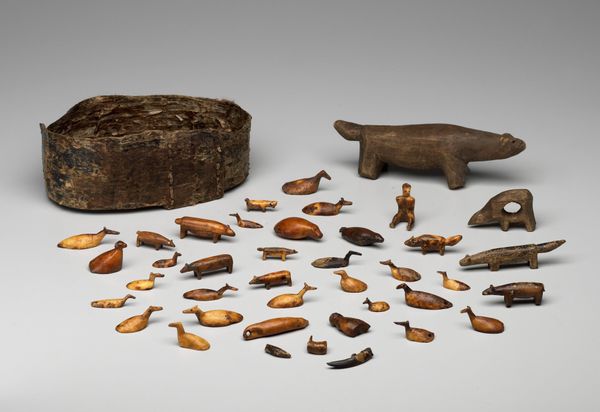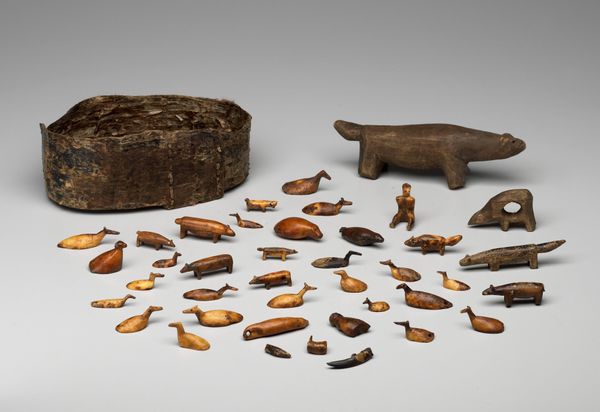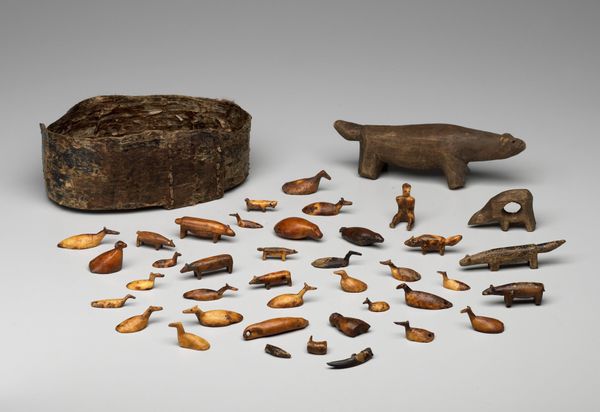
carving, sculpture, wood
#
carving
#
figuration
#
sculpture
#
wood
#
indigenous-americas
Dimensions: 7/16 x 1 x 7/16 in. (1.11 x 2.54 x 1.11 cm)
Copyright: Public Domain
Curator: These are a collection of Inuit carvings held here at the Minneapolis Institute of Art. They date to before 1500. The figures, mostly birds, are crafted from materials such as wood and ivory. Editor: They have such a tactile presence, don't they? And they are simple in shape; that minimalist rendering is really captivating. Curator: Indeed. The indigenous cultures of the Arctic often created small-scale figurative carvings. They functioned as toys or spiritual objects, integral to the lives and belief systems of the people who made and used them. The representation of animals also reflects their relationship with their environment and natural resources. Editor: Notice the surfaces of the wood and ivory, so polished in some areas, quite raw in others. They carry the marks of their making. And the sheer variety of these shapes laid out is wonderful: different profiles and varying dimensions—these contribute to a certain visual rhythm. Curator: They provide us with insight into the everyday. The Inuit peoples were deeply affected by shifts in climate. Resources could disappear, migration patterns could alter, leading to profound changes in their traditional way of life. In what ways could these carvings of birds, for instance, mirror those socio-environmental shifts? Editor: It is humbling to note the variety in a limited medium. How does one coax all those slightly differing curves from a piece of ivory? Note the subtle shift in how each bird's head inclines, which reflects the patience of the artisan, I think. Curator: Yes, exactly! Consider that some scholars believe such collections could’ve been bartered with European and American whalers and explorers in the 19th and 20th centuries. Today, we encounter some of these figures as specimens collected and showcased within museum spaces. Editor: The more you unpack their history and context, the richer their visual language appears. What began as formally pleasing, now reflects migration and globalism. Curator: Absolutely. By contextualizing art objects like these Inuit carvings, we amplify not only their aesthetic impact, but also a society’s lived experience. Editor: I'll remember this variety the next time I approach a wood carving!
Comments
No comments
Be the first to comment and join the conversation on the ultimate creative platform.
